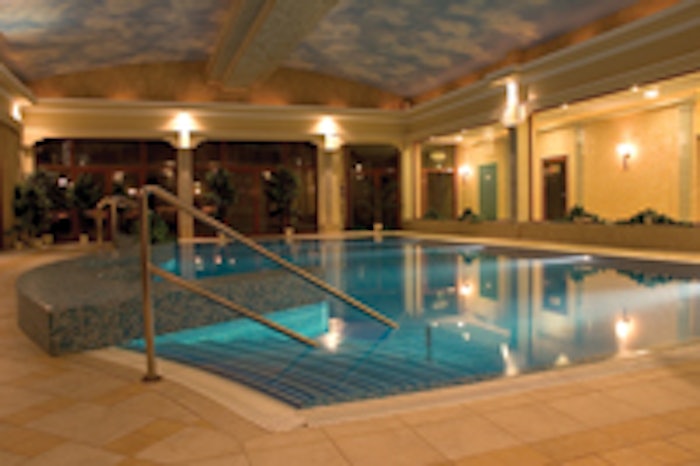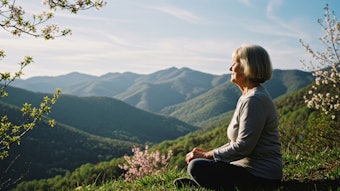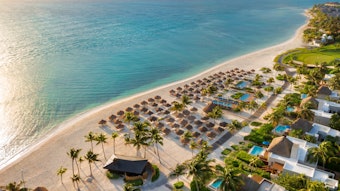
In 2008, I was invited to speak at the SPA Quality and Wellness Forum, held at the Hotel Magellan in Bronisławów, Poland, which is about 100 kilometers from Warsaw. It was an amazing opportunity to become a part of its emerging industry, as well as to get to know some of the wonderful, welcoming people. One traditional Polish saying I learned before my trip is, “A guest in the home is a god in the home,” and that is exactly how I was treated by various hosts during my stay.
It’s funny ... before I was invited to the conference, I’d never really thought about the spa industry in Poland. In fact, many fellow consultants and colleagues were surprised when I told them where I was going. Although the spa and wellness industry is fairly young in Poland and perhaps somewhat unheard of in the United States, it has quickly become an integral part of many hotels and resorts in this country. With a growth rate of approximately 50% in the last year, both new and old hotels alike are adding spa services and programs to their offerings.
Polish pioneers
“One of the first spas in Poland was the destination spa of Dr Irena Eris in Krynica Górska, Poland, which set a new trend here—combining relaxation with body and soul care,” says Mariola Bojarska-Ferenc, a Polish television host, author and speaker who gives lectures and classes at various spa hotels. “The Dr Eris SPA Hotel became one of the main pillars of this philosophy.”
Situated at the foot of the Jaworzyna Krynicka mountain peak, Dr Irena Eris SPA Hotel has views of beautiful forests and lush meadows dotted with grazing sheep. The hotel offers traditional Polish spa facilities—a swimming pool, sauna and whirlpool—and is home to the Dr Irena Eris Skin Care Institute, which provides skin care and body treatments, as well as consultations with dermatologists. And thanks to its customized approach to clients’ needs with services for weight loss, yoga classes, Nordic walking and a special program for expectant mothers, the hotel caters to guests from Poland and abroad.
Another pioneering Polish spa makes its home at the Hotel Malinowy Zdrój, which sits atop a hill and is surrounded by the quaint village and pastoral farmland of Solec Zdrój. Located in the beautiful, low-lying mountains of southern Poland, this spa hotel is just a little more than an hour away from Krakow. The name Malinowy Zdrój translates into “raspberry spring,” a reference to the area’s sulfur spring water, which is used as a part of the health spa’s healing treatments.
Among the offerings there are body wraps; facials; various types of massage, including mechanical and underwater; saunas; local cryotherapy; individual and group physiology treatments; and therapies that incorporate the area’s natural elements of water and peat. Prices for treatments can typically range from 30–300 Polish złoty (zł), the Polish form of currency that has an exchange rate of $100 U.S. to about zł33.44. However, a selection of two treatments from a special menu are included as part of a two-week stay at the facility at no additional price.
According to Robert Węglarz, general manager of Malinowy, there has been a significant increase of interest in Polish spas among foreign tourists. Poland is well-known for its cuisine and incredible hospitality, and this culture is quickly translating into the spa setting. These qualities, combined with various long-term healing programs, work well in the hotel and spa setting, often at a better price than their European counterparts.
As a guest of the hotel, I experienced the best of both traditional food and the aforementioned hospitality, making for a lovely getaway. I also got to sample some traditional Polish spa treatments during my stay, including the crio-sauna, salt cave, inhalation therapy and, of course, pool and water therapies, which are quite popular nationally and help ease muscle and joint pain, manage stress and improve circulation.
From the inside out
So what does the future hold for Poland’s spa industry? Raoul Andrews, president of Aspen Resorts International and a fellow speaker at the SPA Quality and Wellness Forum, suggests the changes and trends in Poland are the same as in most Eastern European states: moving from a thermal kur spa concept of pools, water therapy and mineral springs to a more modern view of health and wellness while still retaining some of its traditional approaches.
Andrews believes that in the next few years, Poland will see more spas with an Asian influence, more holistic and medically oriented spas, and a variety of leisure and pleasure-oriented destinations that include esthetics and fitness. The trend for hotels to add spa services will also continue as will the development of new niches, such as spas for men and club-based spas. Personally, I expect to see more day spas popping up, as well as those that blend a variety of healing traditions, such as ayurveda and energy healing techniques.
If the conference itself was any indication of emerging trends, the infusion of spa and wellness cuisine also will soon be on the rise. One of the most engaging and intriguing events I’ve attended at a spa conference anywhere was the healthy cooking demonstration and dinner here. Foods were combined in ways that were delicious yet new to me and the other attendees—a mango-and-broccoli salad in particular was unexpectedly good—and an emphasis on being aware of what we consume was also the focus of a conference lecture that unveiled a healthy slogan and campaign called “I Choose What I Eat.” This is definitely a new concept to many Poles.
Another apparent trend is the development and implementation of a unified spa association and rating process to help determine what services, facilities and characteristics are necessary for a business to use the word spa, especially as the market grows. Similar to what happened in the United States a few years ago, as consumers are demanding more therapeutic services and the term “spa” as a buzzword is catching on, many smaller businesses that lack some of the traditional elements are using the spa moniker and confusing consumers.
“Raising the purchasing expectations and delivering bigger and better services to the spa and wellness market creates the necessity of classifying and reviewing existing spa centers,” says Węglarz. “It also gives the opportunity to create some service standards and determine and define minimal requirements for professional spa centers. Those kinds of classifications will help clients make the proper choices.”
Facing challenges
With all of the positive growth and emerging trends in the Polish spa industry, there are bound to be some problems, too. “As the spa culture develops worldwide, Poland will have an opportunity to position itself as a spa destination, but to do so would require a total effort from the government and a collaboration of the entire tourism industry in that country,” Andrews comments. “It will be difficult for individual businesses to carve a significant presence without governmental support. Spas in Poland will not be better than other European spas, as they are all going pretty much in the same direction. The difference will be in how much is spent on implementing the services.”
When asked what kind of challenges she sees in Polish spas, Bojarska-Ferenc notes, “Personally speaking, as a client, I think that some spa treatments in Poland lack professionalism and technique. This relates mainly to body treatments, maybe because, until recently, there was no massage tradition in Poland, and one of the most popular forms of massage was sports massage.” Polish spa owners, managers and team members will need to be conscientious of these issues, as well as the desires of their spa-going public, as they continue to build the industry into a global presence.
Building an industry
Of course, now that Poland’s borders are open and the country is a member of the European Union, Polish spas have a greater opportunity to learn from neighboring countries and visiting educators. This openness has already contributed to the rising success of the Polish spa market. My hope as both a consumer and advocate for the Polish spa industry is that all spa professionals learn to embrace even further the philosophy of the aforementioned saying within the spas, perhaps adapting it to, “A guest in the spa is a god in the spa.”











